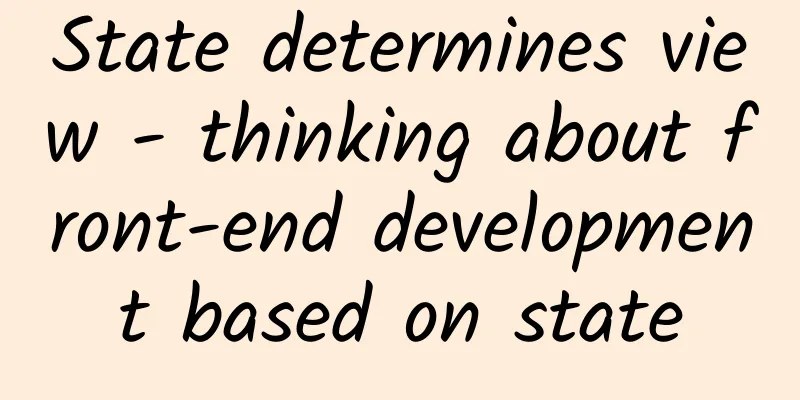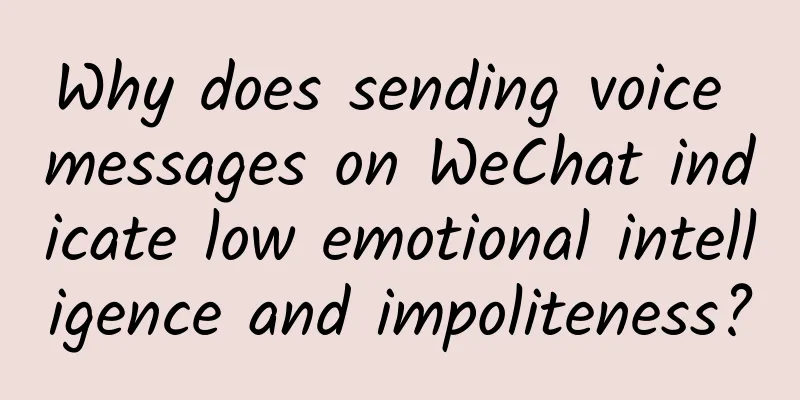State determines view - thinking about front-end development based on state

|
In today's front-end community, concepts such as MVVM and Model driven view are already very popular. Frameworks such as React/Vue can be considered representatives. Although I have experience in using React/Vue and understand core concepts such as MVVM and state machine, I have never been able to apply them well. It was not until a few days ago when I took over the requirement for component development and tried to analyze it carefully before writing that I suddenly figured out the connection. Emmm... The content is relatively shallow, not some amazing magic weapon. It is more of a personal feeling. Personal confusionI was confused about how to write good code some time ago. After learning about "Refactoring" and "Clean Code", I did get better. But writing code always requires refactoring to make it better, which is also very troublesome, so I had the following thoughts. Frontend and StatusIn today's front-end development, state management is of paramount importance. Using MVVM frameworks such as React/Vue can effectively reduce the complexity of front-end development through componentization and automatic binding. MVVMWhen talking about state, we have to mention the MVVM framework. The core of the MVVM framework is not two-way binding or dependency collection, but: the state determines the view. The code description is: View = ViewModel(Model) Ideally, the ViewModel is a pure function that produces the same View given the same Model. With the development of front-end, the state management of Web applications has become more and more complicated. However, due to some characteristics of the front-end:
It also determines that the front-end is only responsible for the visual and interactive layers of the entire Web application. Anything involving data must be rigorously verified by the back-end, and no requests from the front-end are trusted. Therefore, the core work of the front end is to provide a friendly human-computer interaction interface. Of course, this also conforms to the broad definition of the front end. The emergence of MVVM can effectively improve the efficiency and quality of front-end development, and thus has been developed and applied on a large scale. ComplexityIn the book "Code Complete 2", there is a sentence that impressed me: The essence of software engineering is managing complexity. If you think about it carefully, it is indeed true. Front-end development naturally also belongs to software development, and management complexity is precisely the core issue of the front-end at present. Finite State MachineSo how can we better manage the complexity of front-end software? React's state machine concept gives its own answer. State machine is a concept I often hear when I am learning computer science. For example, when I am learning React, I will mention that React is a state machine. When I listen to the team's sharing on compilation principles, I will also hear about state machine. So I went to take a special course to learn about this concept. The description of a finite state machine on Wikipedia is as follows: A finite state machine (FSM), also known as a finite state automaton or state machine for short, is a mathematical model that represents a finite number of states and the transitions and actions between these states. Finite state machine is not a complicated concept Simply put, it has three characteristics:
ImplicationsAs I learned and thought about the concepts of state-determined view and state machine, I had a new idea: The state determines the view, and the Action is responsible for completing the transition between states. Therefore, the key to writing good code is to use the most appropriate state to describe the interface and the most appropriate action to complete the transition between states. Emmm...it's a very simple concept, but I haven't thought about it clearly before. SummarizeAs I understand this concept more, my ideas during development become clearer. Before I write code now, I will think about a series of questions and think them through before I start:
After thinking through these issues, the remaining work is to follow the ideas and complete the data and UI parts. |
<<: A better way to visualize microservice architectures
Recommend
The latest media operation tools in history (121 types)
The core essence of new media is actually tools ....
The strange metal that is "both strong and flexible" makes it possible to build super-strong artificial muscles for transformable aircraft and robots!
Author: Li Chuanfu Shi Xiangqi With the rapid dev...
Closing its Shanghai factory and losing hundreds of millions of dollars each year, is General Motors really going to withdraw from the Chinese market?
The Chinese auto market in the past two years has...
Why can’t we retain new users? Here are 4 best solutions
Why is it that even though we have been attractin...
World Hypertension Day丨Collect this anti-stress manual to help you stay away from the "invisible killer"
May 17, 2023 is the 19th "World Hypertension...
The tulips that were once "priceless" turned out to be infected with a virus?
When people talk about the Netherlands, they natu...
Edge browser is heavily optimized: 0 delay/support for PWA
Microsoft has recently announced that it will rel...
A guide to planning online and offline events!
Everyone is familiar with event planning , but th...
Drinking an average of 1 bottle of beer a day can age your brain by two years
A little drinking can make you happy, but excessi...
Which eight parts are Demi-Gods and Semi-Devils?
This article was first published by Hunzhi (WeCha...
Astronauts can turn around by just swinging their arms, but what about satellites without arms?
On December 9, 2021, "space teachers" Z...
By teaming up with Pizza Hut to launch the "No-Work Healing Center", how does Maimai achieve brand experiential marketing iteration?
The ever-changing market environment has made exp...
Tesla's autopilot is unreliable. An accident only takes 1/8 of a second and leaves no trace.
With the development of technology, the driving a...
Internet celebrity fox died in the snow? Stop feeding wild animals!
On December 26, the topic "Internet celebrit...
Disease control experts remind: Pay attention to these common infectious diseases on campus in spring!
Recently, children have bid farewell to their win...









